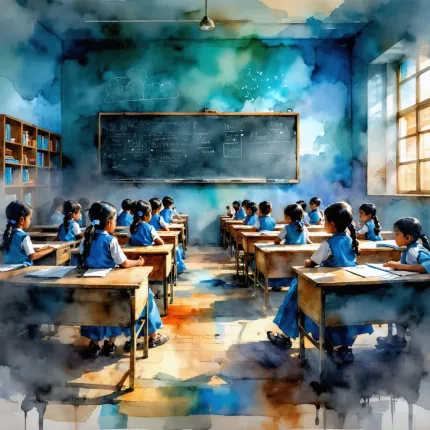Unveiling the Heartbeat of Hindi Literature
Have you ever wondered what breathes life into the vast and vibrant landscape of Hindi literature? It’s not just the words on a page but the voices of extraordinary poets and writers who have shaped its very soul. From the mystic verses of Kabir to the evocative poetry of Ramdhari Singh Dinkar, Hindi literature is a treasure trove of wisdom, emotion, and cultural richness. Yet, for many, the depth and diversity of these literary giants remain a mystery waiting to be explored.
Imagine diving into the world of Kabir Das Ji Ka Jivan Parichay—a journey through the life of a saint whose couplets challenge societal norms and ignite spiritual awakening. Or consider the enchanting melodies of Surdas in Hindi, whose devotional songs transcend time and touch the very core of human devotion. And what about the fiery patriotism and profound reflections of Ramdhari Singh Dinkar, whose words stirred a nation in its fight for freedom and identity? These names are more than just historical figures; they are the pillars that uphold the rich tradition of Hindi literature.
The Challenge of Connecting with Literary Heritage
Despite their immense contributions, many of these literary legends remain underappreciated in contemporary times. In today’s fast-paced digital era, where instant gratification often overshadows deeper cultural engagement, the profound legacy of Hindi literature can feel distant or even inaccessible. Younger generations might find it hard to relate to the classical styles or to understand the historical contexts that shaped these works.
Moreover, the sheer volume and diversity of Hindi literary output—from medieval Bhakti poetry to modern nationalist verse—can be overwhelming. Without a clear guide or contextual understanding, readers often miss the nuanced beauty and socio-political relevance embedded in these texts. This disconnect risks not only diminishing the appreciation for these giants but also losing a vital part of India’s cultural identity.
Illuminating the Path: A Journey Through Hindi Literary Titans
This article aims to bridge that gap by celebrating the poets and writers who defined Hindi literature, bringing their stories and works to life with clarity and passion. We will embark on an engaging exploration of key figures such as Kabir, Surdas, and Ramdhari Singh Dinkar—each representing unique eras and literary movements that collectively shaped Hindi’s literary fabric.
By delving into Kabir Das Ji Ka Jivan Parichay, we will uncover the layers of his philosophies and the rebellious spirit that challenged caste divisions and ritualism with poetic simplicity. We will then move to the lyrical world of Surdas in Hindi, whose devotional compositions celebrate the divine love of Krishna with unmatched emotional intensity. Finally, we will examine the stirring poetry of Ramdhari Singh Dinkar, whose words not only galvanized a nation but also gave voice to the aspirations and struggles of modern India.
Throughout this journey, expect to find stories that inspire, verses that provoke thought, and insights that deepen your connection to Hindi literature’s enduring legacy. Whether you are a student, a literature enthusiast, or simply curious about India’s cultural heritage, this exploration promises to enrich your understanding and appreciation of these literary giants.
Why This Matters Today
In a world increasingly defined by rapid change and global influences, reconnecting with the literary giants of Hindi literature is more important than ever. Their works offer timeless reflections on human nature, social justice, spirituality, and identity—issues still relevant in contemporary discourse. By celebrating their contributions, we not only honor the past but also empower future generations to carry forward a rich tradition of storytelling and poetic expression.
So, are you ready to embark on this captivating voyage through the lives and legacies of Hindi literature’s most celebrated poets and writers? Let’s begin by stepping into the world of Kabir, whose verses continue to resonate with startling relevance even centuries after they were penned.

Literary Giants of India: Celebrating Poets and Writers Who Defined Hindi Literature
Who are the most influential poets and writers in Hindi literature?
Hindi literature boasts a rich heritage shaped by numerous poets and writers whose works have left an indelible mark on Indian culture. Among these literary giants, figures such as Kabir Das Ji, Surdas, and Ramdhari Singh Dinkar stand out prominently. Their contributions span centuries, combining devotional themes, social commentary, and nationalistic fervor, which collectively define the evolution of Hindi literature.
These writers not only enriched the language but also expressed the socio-political realities of their times, influencing generations of readers and writers alike. Their works continue to be studied and celebrated for their literary excellence and profound philosophical insights.
What is the significance of Kabir Das Ji Ka Jivan Parichay in understanding Hindi literature?
Kabir Das Ji Ka Jivan Parichay (Kabir Das's life introduction) is fundamental to grasping the depth of Hindi literature. Kabir Das, a 15th-century poet-saint, is renowned for his couplets (dohas) that blend mysticism, social critique, and spiritual wisdom. Understanding his life story provides context to his poetry, which challenges orthodox religious practices and advocates a direct, personal connection with the divine.
Kabir’s life embodies the confluence of Hindu and Islamic thought, and his verses are characterized by simplicity yet profound meaning. His emphasis on equality, devotion, and inner purity resonates even today, making him a pivotal figure in the Bhakti movement and Hindi literary canon.
Studying Kabir Das Ji Ka Jivan Parichay helps readers appreciate:
- The socio-religious environment of 15th-century India
- The origins and impact of the Bhakti movement on Hindi literature
- The poetic devices and metaphors Kabir employed to communicate complex ideas simply
How did Surdas in Hindi influence devotional poetry and the Bhakti movement?
Surdas in Hindi is a cornerstone in devotional poetry, especially in the context of the Bhakti movement dedicated to Lord Krishna. Surdas, a blind poet from the 16th century, is most famous for his heartfelt compositions that celebrate Krishna's childhood and divine play (leelas).
His poetry is noted for its emotional intensity, vivid imagery, and lyrical beauty, making it accessible and beloved among common people. Surdas’s works helped popularize the vernacular Hindi language, moving away from traditional Sanskrit, thus democratizing spiritual knowledge.
The influence of Surdas in Hindi literature includes:
- Shaping the Braj Bhasha dialect as a literary medium
- Embedding devotional sentiment deeply into Hindi poetry
- Inspiring subsequent generations of poets and musicians in the Bhakti tradition
His compositions are still performed in classical music and theater, demonstrating their enduring cultural significance.
Who was Ramdhari Singh Dinkar, and what role did he play in modern Hindi literature?
Ramdhari Singh Dinkar is a towering figure in 20th-century Hindi literature known for his powerful poetry blending nationalism, social reform, and humanism. Often called the "Rashtrakavi" (National Poet) of India, Dinkar’s work inspired the Indian independence movement and post-independence cultural identity.
Dinkar’s poetry is characterized by:
- Patriotic fervor urging Indians to reclaim their dignity and heritage
- Bold critique of social inequities and call for justice
- Mastery over classical and modern poetic forms, enriching Hindi literature’s stylistic repertoire
His epic poems like Rashmirathi and Kurukshetra reinterpret mythological narratives to reflect contemporary struggles, making ancient stories relevant to modern readers.
Ramdhari Singh Dinkar's legacy lies in his ability to fuse literary artistry with a call to action, thus defining a critical phase in Hindi literary history.
Why is it important to study these literary giants together?
Studying Kabir Das, Surdas, and Ramdhari Singh Dinkar together provides a panoramic view of Hindi literature’s evolution—from medieval devotional poetry to modern nationalist expressions. Their works collectively cover:
- The spiritual and philosophical roots of Hindi poetry
- The linguistic and cultural shifts that shaped regional dialects
- The intertwining of literature with social and political movements
This holistic approach helps readers and scholars appreciate the diversity and depth of Hindi literature, encouraging a deeper engagement with its themes, history, and ongoing relevance.
How can readers engage more deeply with these poets and their works?
Engagement can be enhanced through various methods:
- Reading original texts and translations: Explore collections of Kabir’s dohas, Surdas’s bhajans, and Dinkar’s poems to experience their voices firsthand.
- Listening to musical renditions: Many of Surdas’s bhajans and Kabir’s verses have been set to music, offering an emotive dimension to their poetry.
- Attending literary festivals and seminars: These events often feature discussions and performances that bring historical context and contemporary interpretations.
- Studying historical and philosophical backgrounds: Understanding the socio-political milieu of their times helps decode deeper meanings and influences.
By immersing oneself in these practices, readers can develop a nuanced appreciation for the literary giants who shaped Hindi literature and Indian cultural identity.
Conclusion
The literary giants of India such as Kabir Das Ji, Surdas, and Ramdhari Singh Dinkar have profoundly shaped Hindi literature through their unique voices and visions. From Kabir’s spiritual dohas and Surdas’s devotional songs to Dinkar’s patriotic and reformist poetry, their works reflect the rich tapestry of Indian thought and culture. Understanding their lives and contributions—such as through Kabir Das Ji Ka Jivan Parichay and the study of Surdas in Hindi—opens pathways to appreciating the depth and diversity of Hindi literary heritage. Their enduring legacy continues to inspire readers, scholars, and artists worldwide.



